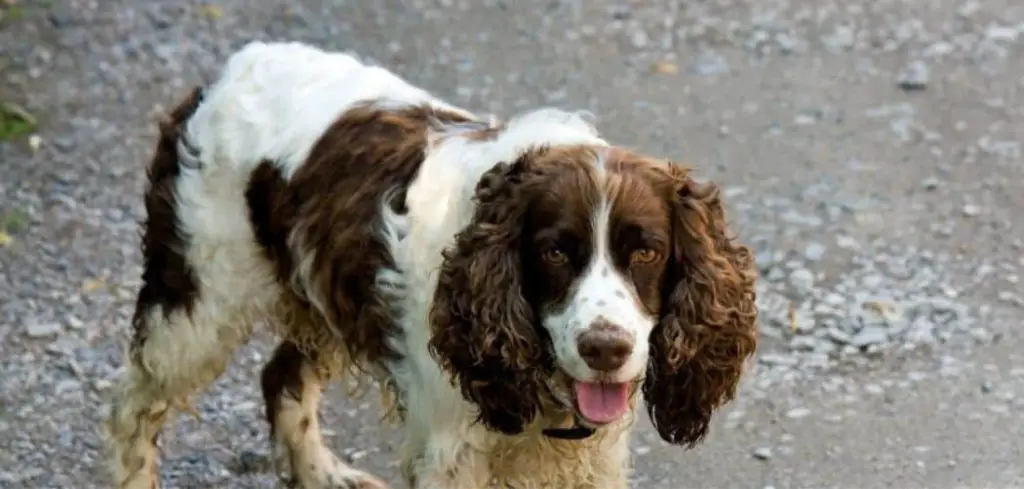If your dog is drooling and shaking and not eating, it’s a distressing sight—and for good reason.
While each of these symptoms can happen in isolation, their combination often signals that something serious is going on.
We outline what might be causing these symptoms, what to do at home, and when to take your dog to the vet immediately.
Dog Drooling and Shaking Not Eating: Why It Happens
When your dog is drooling and shaking and not eating, these symptoms are typically caused by nausea, pain, anxiety, toxin ingestion, or neurological disorders. When a dog is drooling and shaking and not eating, it usually indicates a high level of physical or emotional stress.
It could be something as simple as motion sickness or as serious as poisoning or organ failure. The underlying issue may be acute or chronic—but either way, it needs attention.

Dog Drooling and Shaking Not Eating: Common Causes
Nausea and Digestive Upset
One of the most common causes of a dog drooling and shaking while refusing food is gastrointestinal distress.
Dogs who feel nauseated may shiver, lick their lips, drool excessively, and avoid food altogether.
This may stem from eating something toxic, spoiled, or irritating—like table scraps, garbage, or even grass.
Sometimes mild GI upset resolves on its own, but if your dog continues to shake, vomit, or act lethargic, don’t wait it out.
Nausea-related drooling and shaking can worsen quickly without intervention.
Ingestion of a Toxin
If your dog has gotten into something toxic—such as xylitol (in sugar-free gum), chocolate, certain houseplants, or human medication—you may see drooling, shaking, vomiting, and complete loss of appetite. These symptoms can come on suddenly and escalate fast.
Toxins can affect the nervous system, kidneys, liver, or heart.
If your dog is drooling and shaking and not eating—and you suspect they may have ingested something harmful—this is an emergency.
Call your vet or poison control immediately and bring any product label you can.
Related: Dog drooling and not eating (Causes and when to worry)
Pain or Internal Discomfort
Dogs in pain will often tremble and become withdrawn. Dental pain, abdominal discomfort (like pancreatitis or bloating), or injuries such as sprains or internal trauma can all cause your dog to drool, shake, and avoid food.
Pain may also make them hide, yelp when touched, or appear restless.
Don’t assume your dog is “just sore” or “being dramatic”—shaking and drooling together signal significant discomfort and should never be ignored.
Fear, Stress, or Anxiety
Dogs who are terrified or highly stressed often exhibit physical signs such as trembling and drooling.
If something has spooked your dog—fireworks, thunderstorms, a trip to the vet—they might refuse food, shiver, and salivate excessively.
This can be temporary, but if your dog regularly experiences intense anxiety that affects their appetite and behavior, talk to your vet about behavioral training or medications.
Chronic stress can take a toll on both mental and physical health.
Neurological Issues
Sometimes shaking and drooling are signs of a neurological disorder such as seizures, vestibular disease, or a brain tumor.
These conditions can also cause disorientation, head tilting, loss of balance, and in severe cases, collapse.
If your dog appears confused, can’t walk properly, or begins to twitch or tremble uncontrollably, this may be a neurological emergency. These issues are more common in senior dogs but can occur at any age.
What to Do if Your Dog Is Drooling, Shaking, and Not Eating
Here are some immediate steps to take if your dog is showing these symptoms:
Remove access to any potential toxins and inspect your dog’s environment.
Offer water or ice cubes to check if they’re able and willing to hydrate.
Check for injuries or swelling, especially in the abdomen or limbs.
Create a calm, quiet space to reduce environmental stress.
Monitor for vomiting, diarrhea, or worsening lethargy.
If symptoms persist beyond an hour or worsen rapidly, it’s best to err on the side of caution and contact your vet.
When to Call or Visit Your Vet
Call your vet right away if:
Shaking continues for more than 30 minutes.
Your dog is completely refusing food and water.
You suspect your dog ingested something harmful.
There is vomiting, bloody stool, or collapse.
Your dog appears confused, uncoordinated, or unresponsive.
Dogs can deteriorate quickly, especially with toxin exposure or internal conditions like pancreatitis or seizures. Early diagnosis can make all the difference.
Related: Dog drooling diarrhea, and not eating (What it means)
Key Takeaway
When your dog is drooling and shaking and not eating, it’s never “just nothing.” These signs mean your dog is deeply uncomfortable—whether it’s pain, nausea, fear, or something more serious.
As their guardian, your attentiveness can make all the difference.
Whether you’re dealing with a mild upset or a full-blown emergency, don’t wait too long to act. Your dog relies on you to recognize when something isn’t right—and get them the care they need to feel better.
